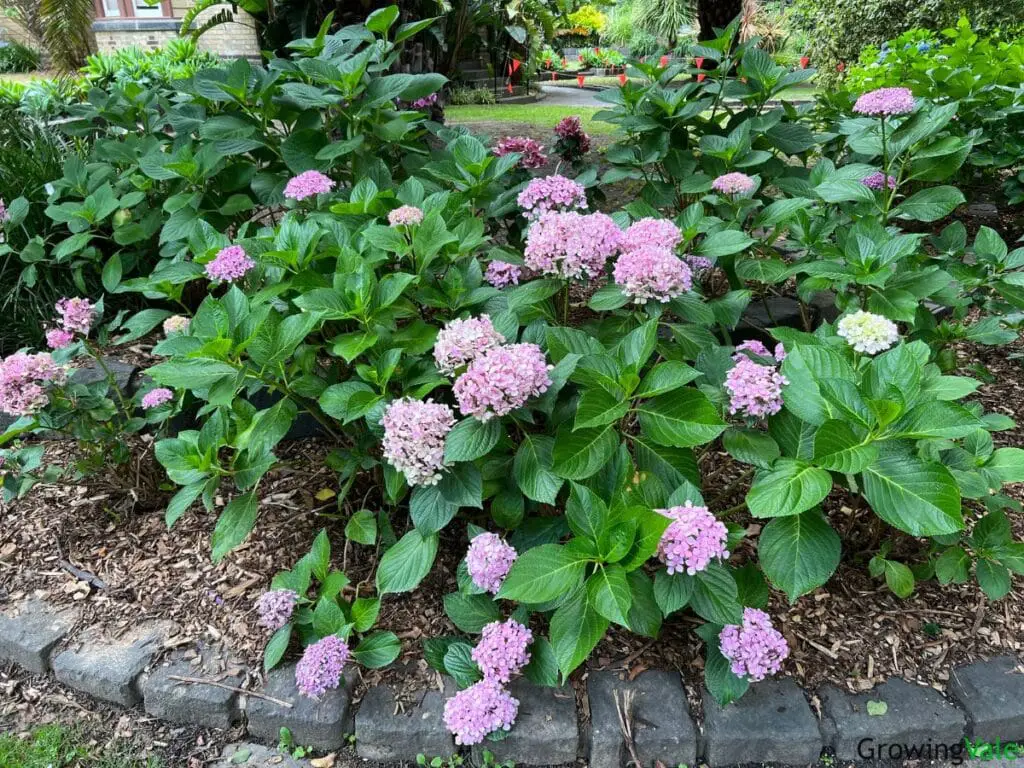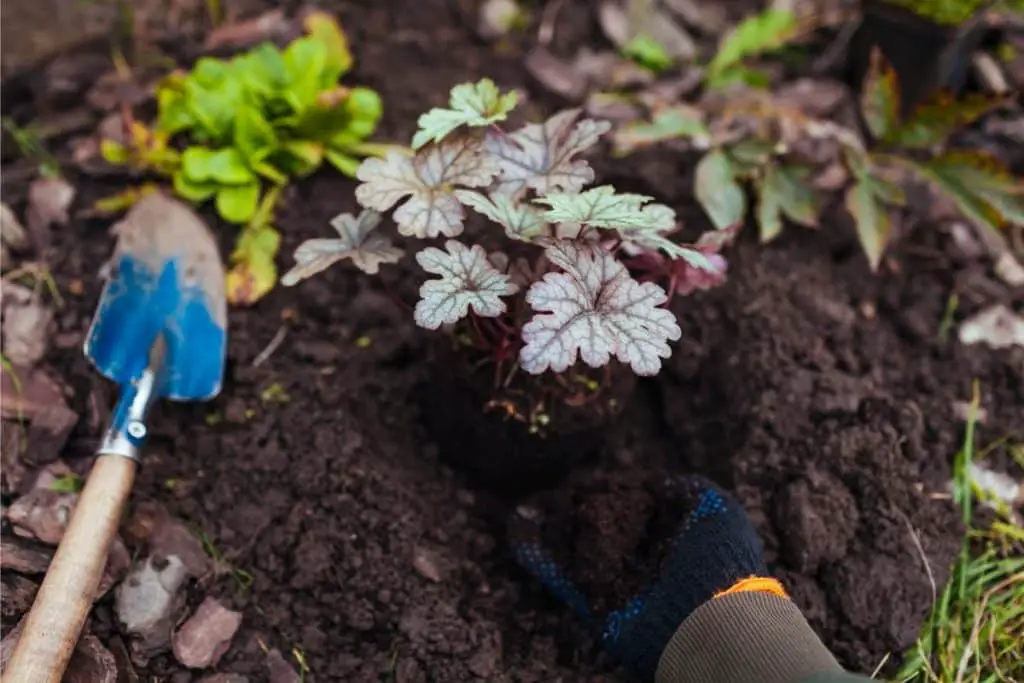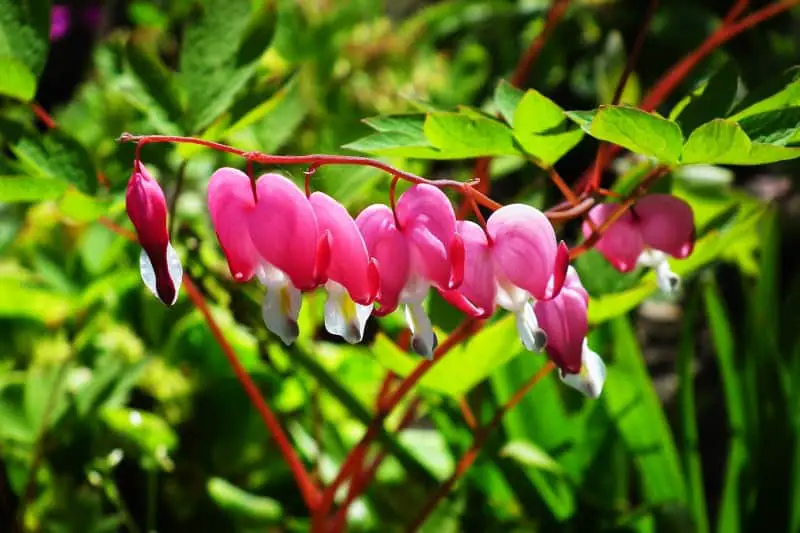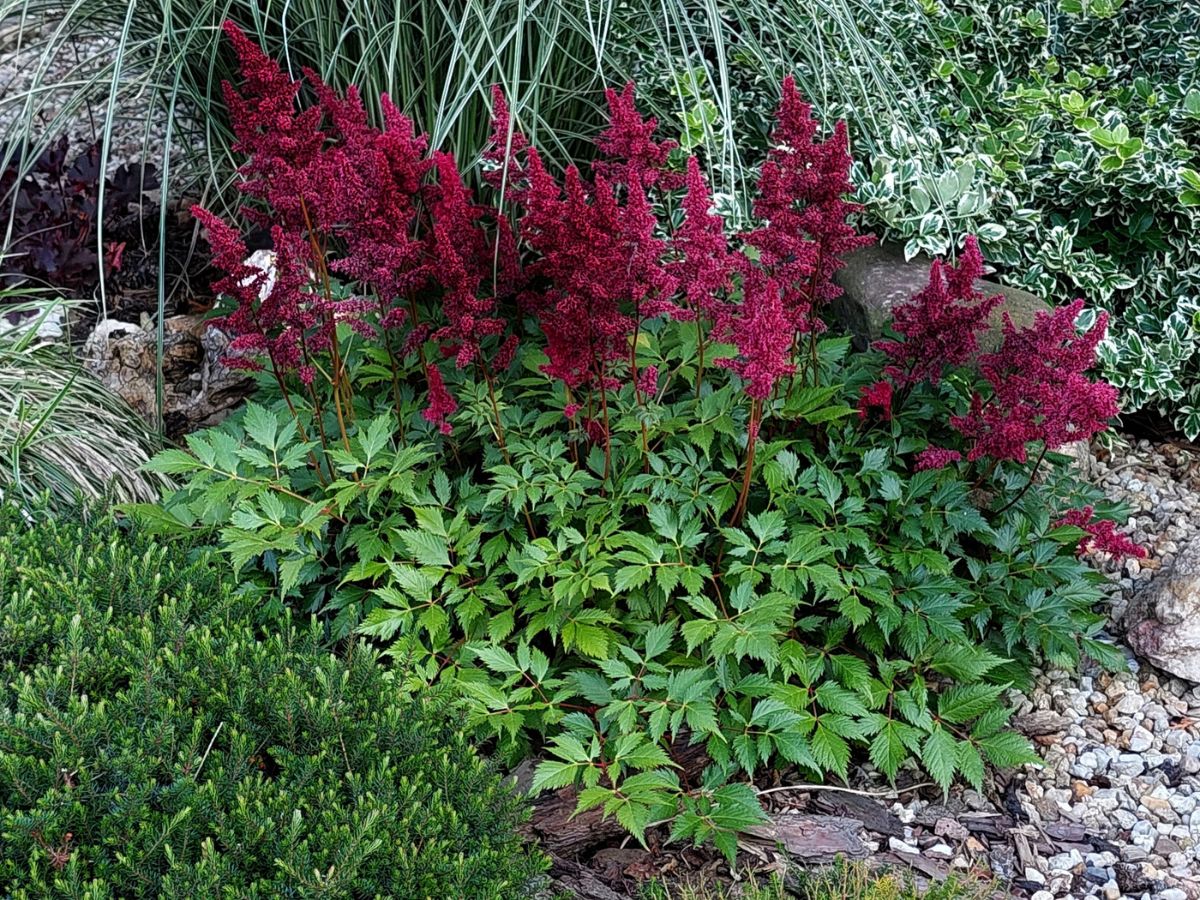If your garden is in need of lush sprays of color, the flower plumes of astilbe plants should do the trick!
Members of the Saxifragaceae family of flowering herbs, astilbe species are known for their fern-like foliage, eye-catching inflorescences, and adaptations to a wide range of growth conditions.
The best astilbe companion plants are shade loving perennials that favor moist conditions and ample ventilation. These include ornamentals like blue hostas, the Japanese painted fern, and coral bells. Other hardy perennials like hydrangeas and holly ferns should fare well next to astilbes too.
Common Astilbe Varieties and Their Features
The most popular astilbe varieties for your garden include cultivars of Astilbe chinensis, Astilbe simplicifolia, and Astilbe japonica. Able to thrive in partial shade and moist conditions, their tiny flowers and textural foliage can draw attention to shade gardens and pond-side locations.
Largely native to the mountain forests and ravines of North America and Asia, astilbes may also be referred to as false spirea and false goat’s beard. Their colorful plumes emit a pleasant fragrance that can draw a variety of pollinators to the garden. To accentuate their best features, avoid exposing the roots and leaves to direct sun.
Plants That Grow Well With Astilbe
Here’s what to plant with astilbe:
Hostas (Hosta spp.)

Hostas are some of the best companion plants for astilbe because they favor full to dappled shade conditions. Their lush, glossy leaves may come in vivid shades of deep green to golden-yellow. The gold varieties may look particularly striking as a textural backdrop to the plume like flowers of astilbes.
Hostas thrive best in hardiness zones 3-9. As astilbes grow well in these same zones, these two plants should easily complement one another. Be sure to space them out, however, as a lack of air circulation around the leaves may stimulate the spread of pests and diseases. Moreover, note that poor conditions may cause both of these plants to have fading foliage.
Hydrangeas (Hydrangea spp.)

Hydrangeas are generally great companion plants for other delicate perennials that prefer slightly acidic soil, full sun to partial shade, and a rich organic matter profile. As these plants tend to be more tolerant of a wide range of exposure conditions, they can be situated along the edges of a shady spot.
The most common hydrangeas for ornamental cultivation include bigleaf hydrangea (H. macrophylla) and panicled hydrangea (H. paniculata). These species produce colorful, large blooms in early spring to autumn. As astilbes tend to bloom in mid to late summer, hydrangeas may lengthen the seasonal interest of shady spots.
Ligularia (Ligularia sibirica)
A member of the sunflower family, ligularia is an ideal astilbe companion plant as it can easily tolerate light, early morning, and dappled shade. Note, however, that deep shade can reduce the abundance of its yellow, daisy-like flowers.
A wetland plant, this ornamental perennial favors damp conditions. You may grow astilbes along the foreground of a dense ligularia stand.
Holly Fern (Cyrtomium falcatum)
Moisture and shade-loving plants grow quite well next to holly fern, which produces stunning and deeply colored foliage. The best companion plants for this species are other feathery ferns that favor shade conditions as well as flowering perennials that need substantial moisture to bloom.
Best grown in hardiness zones 6-11, the holly fern, like most ferns that are native to tropical or subtropical areas, is tolerant of almost full shade. With a mature size of about 2 by 3 feet, it is a must-have textural addition to the astilbe garden.
Solomon’s Seal (Polygonatum spp.)
This late spring to mid summer bloomer is a favorable astilbe companion. One of the best woodland friends for other shade loving plants, its best features are brought out by low light conditions and dappled shade.
Good drainage, neutral to slightly acidic soil conditions, and nutrients from organic matter should help solomon’s seal and any nearby astilbes bloom in spring to summer. Moreover, as Polygonatum species can take a fair amount of time to become established, it’s highly unlikely that they will outgrow or compete with your other plants.
Rhododendron (Rhododendron spp.)
Companion planting with rhododendrons is always fun because the blooms of these ornamentals tend to bring out the best features of most plants around them.
Members of the heath family (Ericaceae), these woodland species produce large clusters of eye-catching blooms in late spring to early summer. This bloom time coincides with that of most astilbe species. You may plant rhododendrons next to astilbes as both of these plants favor the same growth conditions.
Coral Bells (Heuchera spp.)

Coral bells are some of the best astilbe companion plants because they thrive in shady gardens in hardiness zones 4-9. With lovely, bell-shaped flowers that may appear as early as mid spring through late summer, coral bells look fantastic next to most plants.
As long as their roots are provided with ample moisture all throughout the growth season, coral bells can tolerate a wide range of ambient conditions. With their colorful foliage, they are known for adding complexity to the garden all season long.
Bleeding Heart (Lamprocapnos spectabilis)

Make sure to plant this unique perennial in hardiness zones 3-9 to bring out its best features. The drooping, heart-shaped blooms should complement the colors of astilbe inflorescences.
Planting Lamprocapnos species next to astilbes is always a good idea as both groups of plants have the same soil and light preferences. Like astilbe, bleeding heart flourishes in damp conditions and under dappled shade.
Using Astilbes to Draw Attention to Fern-Like Foliage in A Shade Garden
Plant astilbes in between different species of feathery ferns to draw attention to their highly textural foliage.
On their own, ferns may not provide the complexity and color that you feel your garden truly needs. Unlike ferns, astilbes produce colorful, plume like flowers and are irresistible to many pollinators.
Plants That Would Not Thrive Next to Astilbe
Plants that require direct sun conditions and dry substrates would not be ideal astilbe companions. Those that tend to grow quickly and compete for resources should also be planted further away from astilbe.
If you’re in the market for companion plants, always look for those sharing the same basic requirements and hardiness zones. Plants like daylilies, cacti, succulents, English ivy, mint, or bamboo would not be favorable as astilbe companions.
*image by shalom3/depositphotos

